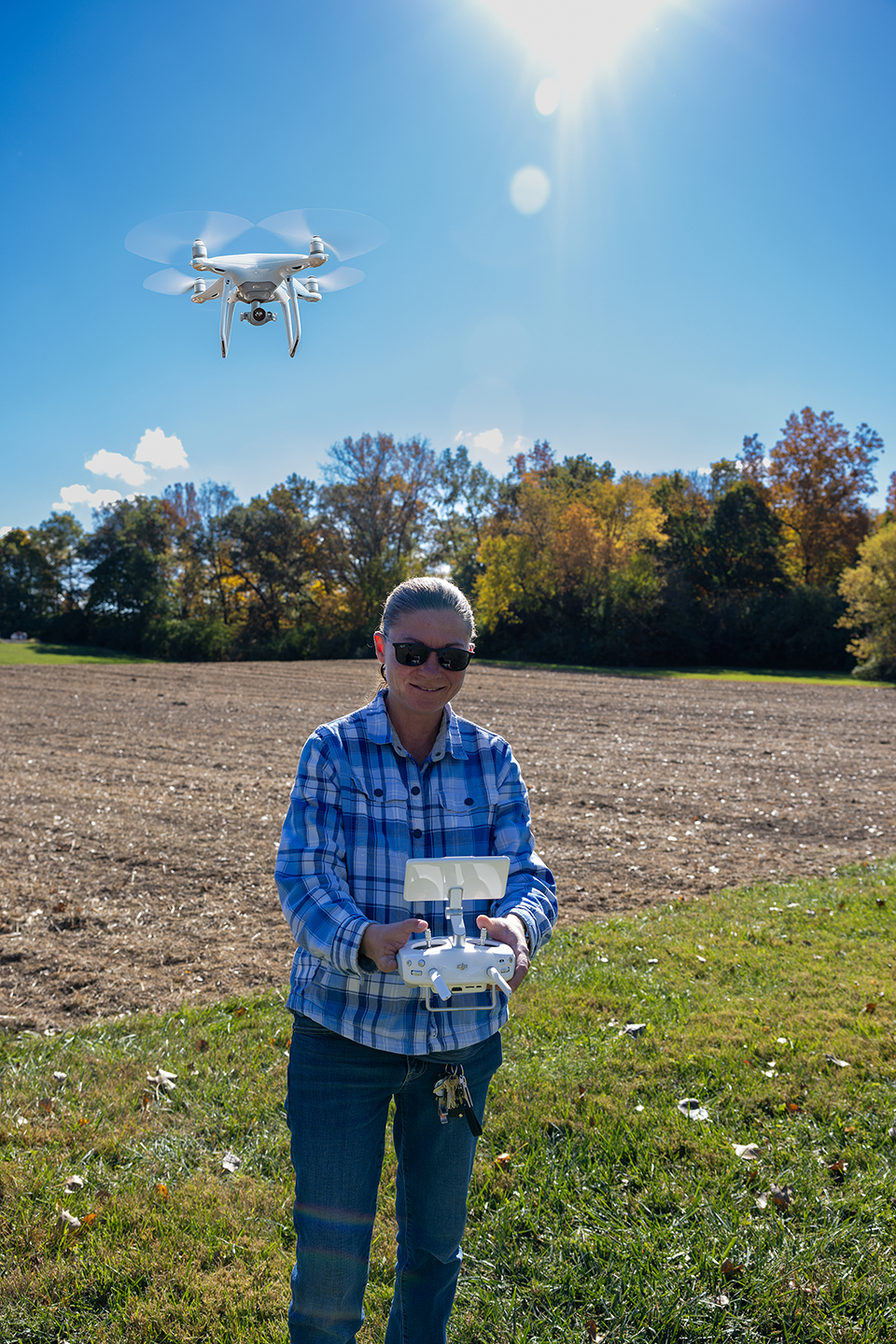 Arly Drake, Ph.D., associate professor of agriculture at Clark State in Springfield, demonstrates drone technology in the precision ag program.
Arly Drake, Ph.D., associate professor of agriculture at Clark State in Springfield, demonstrates drone technology in the precision ag program.
Clark State College, a founding member of the Community College Alliance for Agriculture Advancement and the hub for the Ohio Center for Precision Agriculture, has announced a groundbreaking initiative with the U.S. Department of Agriculture – Natural Resources Conservation Service: a $9 million, four-year program to create a national agriculture center for two-year colleges and connect more students to agriculture career pathways.
Part of a cooperative agreement between C2A3 and USDA-NRCS, C2A3 will become a national hub for two-year agriculture education, developing expertise and regional programming and curriculum that can be replicated across the country. Through this alliance, Clark State can access more resources and gain assistance in building partnerships with local and state USDA-NRCS offices.
“C2A3 schools will increase student interest in agriculture, natural resources and conservation, with a focus on preparing students for USDA jobs,” said Astrid Martinez, director of the Conservation Planning and Technical Assistance division with the USDA-NRCS, who has been instrumental in establishing the agreement. “This is an important step in developing the next generation of agricultural leaders.”
Clark State has long supported this goal, offering certificates and pathways as well as associate degree programs in precision agriculture and precision agriculture technician. The programs prepare students for careers such as farm operators, agriculture engineers, irrigation technicians and agronomists by covering essential topics like soil science and fertility, pests, yield mapping, remote sensing, geographic information and data analysis. Upon graduation, students will be prepared to identify plant nutrient deficiencies, develop agricultural business plans and analyze data from precision agriculture platforms.
“As agriculture increasingly relies on technology, the demand for professionals skilled in implementing geospatial technologies like GPS and GIS continues to grow,” said Arly Drake, Ph.D., associate professor of agriculture at Clark State. “Clark State’s precision agriculture program provides these critical skills, promoting efficient resource use and contributing to sustainable farming practices.”
Proposed projects as part of the co-op agreement between C2A3 and USDA-NRCS include artificial intelligence and precision livestock; crop drainage and irrigation management; soil quality, field and pasture renovation and cover crops; water quality, pond and wetland management; silvopasture management; and urban agriculture.
The C2A3 consortium will also create student internship and leadership opportunities to network with USDA employees. Additionally, it will cover travel expenses for faculty and students to attend an annual conference, allowing them to stay at the forefront of practical experiences and knowledge.
“The rapid growth of technology in agriculture requires colleges to be nimble and respond quickly to changes within the industry,” said Tracy Kruse, C2A3 executive director. “This alliance will support colleges and provide them the tools to rapidly respond to the workforce needs within agriculture.”
Drake agreed.
“Agriculture has always been technology based but it is quickly growing and adopting new technologies each year,” Drake explained. “What makes precision agriculture different from agriculture is the capability to gather information on a specific plant or animal and create the best plan for their success based on data and research. With precision mapping, a soil test map, a yield map, a drainage map and a topography map can all be placed accurately using GPS coordinates. Using this data, producers can develop fertilizer, plant population, pest control and equipment recommendations for each part of the field. Precision sensors and guidance systems allow accurate placement of seed to within half-inch accuracy. Clark State is proud to be at the cutting-edge of initiatives that support innovation in farming and allow us to cultivate a sustainable future for agriculture in Ohio and beyond. By using real-life examples of conservation in classroom and land labs in our program, students can bridge the gap between theoretical knowledge and practical application and be well-prepared for careers in agriculture.”
The next generation of agricultural professionals can take the next step toward an impactful career by enrolling in Clark State’s precision agriculture program at www.clarkstate.edu or by contacting Drake at drakea@clarkstate.edu.
